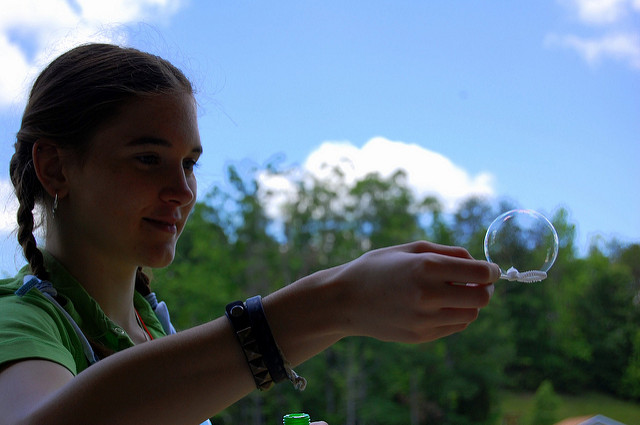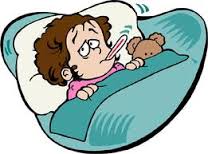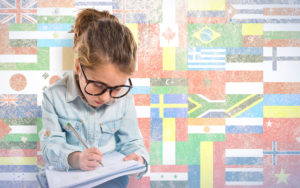 Almost everyone experiences culture shock when they come to a completely new environment. Everything is different: the language, the food, and the people.
Almost everyone experiences culture shock when they come to a completely new environment. Everything is different: the language, the food, and the people.
When everything feels so unfamiliar, it is natural to long for the security of home. However, you don’t want to let that feeling of longing for home, make you too sad or prevent you from finding happiness in your new home.
Here are my Top 5 Tips for Dealing with Homesickness
1. Make Friends – Don’t wait for other au pairs to reach out to you, reach out to them. There are other lots of new au pairs who are feeling the same way you are right now. Set a goal to reach out to a few of them each day. Some will respond and some will not. Don’t let that discourage you. No one will ever be mad at you for sending them a message to say hello or ask if they want to do something together. Make friends from various countries and you will also get a chance to practice your English skills together.
2. Stay in touch with your home country, but not too much. Skyping or talking on the phone every day with your family and/or friends back home often makes homesickness worse. Try texting instead and reduce the Skype and phone calls to once a week, until you feel stronger. It’s much harder seeing the faces and hearing the voices of those you miss.
3. Get out of the house (or your room specifically) – Go to cluster meetings, have coffee or go to movies with other au pairs, join a gym, go to the library, go for a walk, visit the mall, get a manicure, visit a museum. If someone invites you out, say “yes.” Also, don’t be afraid to do the inviting. If your host family invites you to do things with them, say “yes.” This will help you get to know each other and contribute to your overall happiness.
4. Realize that it definitely gets better – All au pairs experience homesickness and nearly all of them stay and have a successful year (some stay for two years). So, it must get better, right? Once you get past the initial homesickness, most au pairs report how quickly the year goes by.
5. Make Plans – Create your own Au Pair Bucket List (places you want to go, new foods to try, new things to experience during your year in the U.S.) and start doing them now. Post on our cluster group to find others who may want to join you on your adventures.
Photo by: Hernán Piñera (Flickr)



 Summer is coming, so it is an important time to talk about the specific safety issues of the season:
Summer is coming, so it is an important time to talk about the specific safety issues of the season: Just because a child is old enough to occupy themselves, doesn’t mean that they should be expected to do so the majority of the time. Host families have a certain expectation of activity and involvement for their children. Get the kids engaged and active. You can be more fun than the TV or a video game.
Just because a child is old enough to occupy themselves, doesn’t mean that they should be expected to do so the majority of the time. Host families have a certain expectation of activity and involvement for their children. Get the kids engaged and active. You can be more fun than the TV or a video game. We live in a time of constant sharing through social media. We often share pictures, plans of somewhere we are going or rants about problems, without thinking much about who will see it and what could be the consequences.
We live in a time of constant sharing through social media. We often share pictures, plans of somewhere we are going or rants about problems, without thinking much about who will see it and what could be the consequences. Valentine’s Day (February 14) is a time of love, friendship, giving and caring. Americans use Valentine’s Day as an opportunity to tell friends and family how much they care. Children often exchange cards at school.
Valentine’s Day (February 14) is a time of love, friendship, giving and caring. Americans use Valentine’s Day as an opportunity to tell friends and family how much they care. Children often exchange cards at school. The purpose of this article is to provide information and offer suggestions to au pairs with regard to caring for children who are ill. It is intended that au pairs discuss this information with their host parents as they might want to modify or expand on what is presented here.
The purpose of this article is to provide information and offer suggestions to au pairs with regard to caring for children who are ill. It is intended that au pairs discuss this information with their host parents as they might want to modify or expand on what is presented here. One of the most valuable features of the cultural exchange experience that hosting an au pair provides for our host families is the love of language and learning that it brings to the host children. If you want your children to grow up learning another language (or several!), au pairs are a great way to give kids regular exposure and daily practice with foreign language and vocabulary, during their most formative years.
One of the most valuable features of the cultural exchange experience that hosting an au pair provides for our host families is the love of language and learning that it brings to the host children. If you want your children to grow up learning another language (or several!), au pairs are a great way to give kids regular exposure and daily practice with foreign language and vocabulary, during their most formative years. The back pack is very important to review every day. It is one of the important links between school and home. Backpacks quickly become disorganized and notices missed if not emptied every day. Here is a suggested daily routine that you can follow, or supervise your host children as they do it, depending on their age(s):
The back pack is very important to review every day. It is one of the important links between school and home. Backpacks quickly become disorganized and notices missed if not emptied every day. Here is a suggested daily routine that you can follow, or supervise your host children as they do it, depending on their age(s):